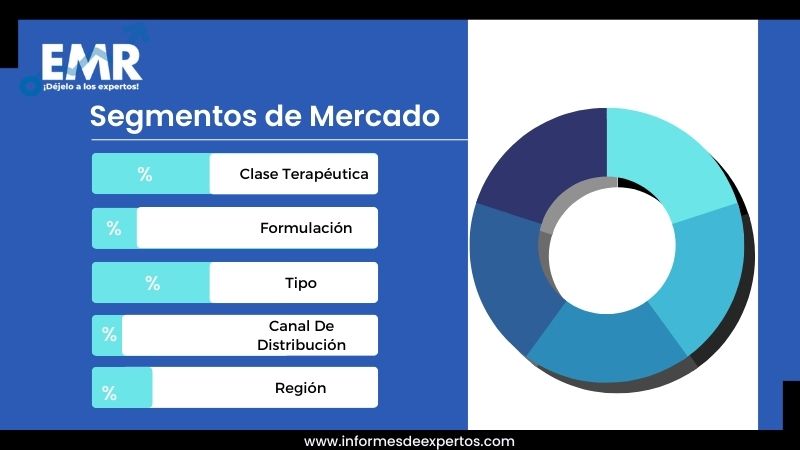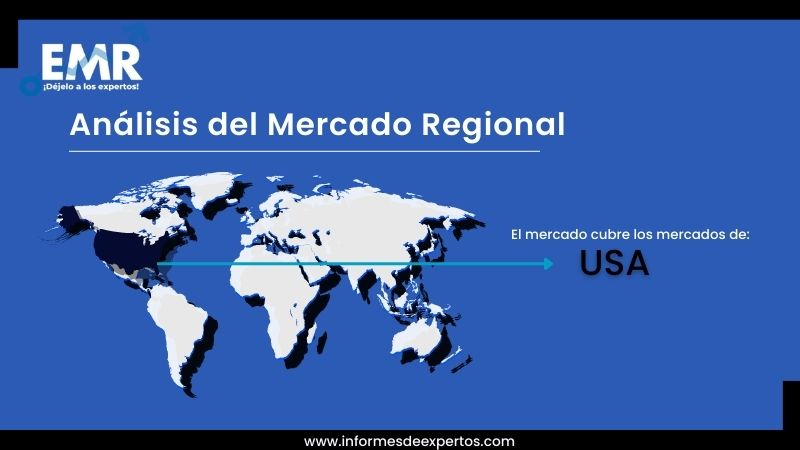Informes

Mercado Estadounidense de Analgésicos Tópicos – Por Clase Terapéutica (Opioides y No Opioides); Por Formulación (Crema, Gel, Aerosol, Parche); Por Tipo (Analgésicos con Receta y Venta Libre de Analgésicos); Por Canal de Distribución (Farmacias y Droguerías, Comercio Electrónico, Tiendas Minoristas y de Abarrotes); Por Región (Nueva Inglaterra, Medio Oriente, Grandes Lagos, Llanuras, Sureste, Sudoeste, Montañas Rocosas, Lejano Oeste y Otros); Dinámica del Mercado y Panorama Competitivo
Perspectiva del Mercado Estadounidense de Analgésicos Tópicos
En 2025, el mercado estadounidense de analgésicos tópicos alcanzó un valor aproximado de USD 3,03 mil millones. Se calcula que el mercado crecerá a una tasa anual compuesta del 4,1% entre 2026 y 2035, para alcanzar un valor de 4,33 mil millones de USD en 2035.
Los analgésicos tópicos se refieren a los productos como cremas, lociones o aerosoles que se aplican a la capa epidérmica de la piel sobre el área de inflamación o dolor. Están diseñados específicamente para aliviar el dolor. Cuando su aplicación está combinada con el acto físico de frotarlos sobre el área afectada de la piel, estos analgésicos ayudan a relajar los músculos y mejorar la circulación sanguínea. Actúan como una buena alternativa para aquellas personas que no pueden tomar medicamentos orales y ofrecen menos efectos secundarios.
La industria de los analgésicos tópicos de los Estados Unidos se ve favorecida por la creciente prevalencia de la artritis y otras afecciones relacionadas con los huesos, la neuropatía diabética, que provocan dolor en el cuerpo. Además, la creciente demanda de analgésicos tópicos por parte de los deportistas y el aumento de la población geriátrica respaldan el desarrollo de la industria.

Asimismo, otros factores, como los efectos secundarios menores en comparación con los analgésicos orales, el aumento de la prevalencia de enfermedades crónicas, como el cáncer y la diabetes, y la creciente conciencia de la farmacia en línea, contribuyen aún más al crecimiento de la industria. Sin embargo, la industria se enfrenta a ciertos desafíos, ya que estos medicamentos pueden irritar la piel y tener un olor fuerte o desagradable que puede obstaculizar el crecimiento del mercado.
Se espera que el desarrollo de la plataforma en línea para terapias tópicas brinde lucrativas oportunidades de crecimiento para el tamaño del mercado de analgésicos tópicos durante el período de pronóstico. Además, los avances tecnológicos recientes de los fabricantes relacionados con el desarrollo de parches transdérmicos para el manejo del dolor y nuevas formulaciones tópicas para aliviar el dolor en trastornos cerebrales como el Parkinson y el prurito crónico también crearán grandes oportunidades para que el mercado florezca.
Analgésicos Tópicos: Segmentación del Mercado

Según la clase terapéutica, el mercado se bifurca en:
- Opioides
- No Opioides
El segmento de la industria no opioide domina el mercado debido a la fácil disponibilidad de productos no opioides. Los opioides se segmenta en Nonsteroidal Anti-Inflammatory Drugs (NSAIDS), Methyl Salicylates, Capsaicin, Lidocaine, Other Non-Opioids y no opioides en Buprenorphine, Fentanyl.
Por la formulación, la industria se puede clasificar en:
- Crema
- Gel
- Aerosol
- Parche
Según el tipo, el mercado se segmenta en:
- Analgésicos con Receta
- Venta Libre de Analgésicos
Sobre la base de los canales de distribución, el mercado se segmenta en:
- Farmacias y Droguerías
- Comercio Electrónico
- Tiendas Minoristas y de Abarrotes
Además, el estudio ha evaluado a fondo el mercado en Nueva Inglaterra, Medio Oriente, Grandes Lagos, Llanuras, Sureste, Sudoeste, Montañas Rocosas, Lejano Oeste y en otros países de los Estados Unidos.

La creciente prevalencia de enfermedades crónicas impulsa el mercado estadounidense de analgésicos tópicos
El aumento de la incidencia de la artritis y otras enfermedades relacionadas con los huesos, como la neuropatía diabética, así como otros trastornos que causan dolor, están impulsando el mercado de los analgésicos tópicos en Estados Unidos. El mercado también se ve impulsado por el aumento de la población de edad avanzada en el país y la creciente demanda de tratamientos analgésicos tópicos entre los deportistas.
Otros factores que apoyan la expansión del mercado son una mayor accesibilidad, el aumento de la concienciación sobre las terapias tropicales, la reducción de los efectos secundarios en comparación con los analgésicos orales y el aumento de la prevalencia de enfermedades crónicas como el cáncer y la diabetes. Además, se prevé que el desarrollo de las farmacias en línea y la disponibilidad de una amplia variedad de productos tópicos para el alivio del dolor, como geles, ungüentos y cremas, entre otros, ofrezcan perspectivas de crecimiento lucrativo del mercado en el período de pronóstico.
Actores Claves del Mercado Estadounidense de Analgésicos Tópicos
Algunos de los principales actores mundiales son AdvaCare Pharma, GlaxoSmithKline Plc., Johnson & Johnson Services Inc., Novartis International AG, Pfizer Inc., Reckitt Benckiser Group Plc., Sanofi S.A., Sun Pharmaceutical Industries Ltd. y Topical BioMedics, Inc. entre otros.
Las bases de datos incluidas en el informe sobre el mercado estadounidense de analgésicos tópicos proporcionan importantes impactos en el desarrollo presentadas por las principales empresas, teniendo en cuenta sus ingresos. Este informe consta de los valores del período histórico (2019-2025) y del período de pronóstico (2026-2035) con patrones de evaluación ampliados que se llevan a cabo mediante el análisis IDE basado en clase terapéutica, formulación, tipo, canal de distribución, región del mercado para determinar el movimiento del estudio.
Además, el proyecto estudiado y analizado se basa en información detallada sobre el modelo de las cinco fuerzas de Porter, las estrategias de los principales actores existentes y sus carteras con diferenciación beneficiosa en innovación de productos en la industria. Por lo tanto, se concluye que el análisis del poder de negociación de los compradores, el poder adquisitivo de los consumidores, la amenaza de los sustitutos y la nueva entrada con el efecto de la reactivación económica y el desarrollo se evalúa para subrayar el poderoso impacto en el mercado.
Preguntas Clave Respondidas en Este Informe:
- ¿Cuál es el rendimiento actual y la trayectoria proyectada del mercado estadounidense de analgésicos tópicos?
- ¿Cuáles son los principales impulsores, oportunidades y retos para el mercado estadounidense de analgésicos tópicos?
- ¿Cómo afecta cada impulsor, restricción y oportunidad al mercado estadounidense de analgésicos tópicos?
- ¿Cuáles son los principales mercados regionales estudiados en el informe?
- ¿Cuál es la región líder en el mercado estadounidense de analgésicos tópicos?
- ¿Qué factores contribuyen al dominio de esta región en el mercado estadounidense de analgésicos tópicos?
- ¿Cuál es la tasa de crecimiento histórica del mercado estadounidense de analgésicos tópicos en los últimos años?
- ¿Cuáles son sus respectivas fortalezas y enfoques de mercado?
- ¿Cómo contribuyen estas empresas a la dinámica general del mercado estadounidense de analgésicos tópicos?
- ¿Cuál es la estructura competitiva del mercado?
- ¿Quiénes son los principales actores del mercado estadounidense de analgésicos tópicos?
Beneficios Clave para las Partes Interesadas:
- El informe de la industria de IDE ofrece un análisis cuantitativo exhaustivo de varios segmentos del mercado, las tendencias históricas y actuales del mercado, las previsiones del mercado y la dinámica del mercado estadounidense de analgésicos tópicos de 2019 a 2035.
- El informe ofrece los datos más recientes sobre los impulsores, retos y oportunidades del mercado. El informe traza los principales mercados regionales, así como los que registran la tasa de crecimiento más rápida. Además, permite a las partes interesadas identificar los principales mercados nacionales de cada región.
- El análisis de las cinco fuerzas de Porter ayuda a las partes interesadas a evaluar el impacto de los nuevos operadores, la rivalidad competitiva, el poder del proveedor, el poder del comprador y la amenaza de sustitución. Ayuda a las partes interesadas a analizar el nivel de competencia en la industria de estadounidense de analgésicos tópicos y su atractivo.
- El panorama competitivo permite a las partes interesadas comprender su entorno competitivo y ofrece una visión de las posiciones actuales de los principales actores del mercado.
Alcance del Mercado:
|
Características del Informe |
Detalles |
|
Año Base de la Estimación: |
2025 |
|
Datos Históricos: |
2019-2025 |
|
Datos de Pronóstico: |
2026-2035 |
|
Alcance del Informe: |
Tendencias Históricas y Previsiones del Mercado, Impulsores y Limitantes de
|
|
Desglose por |
|
|
Desglose por Formulación: |
|
|
Desglose por Tipo: |
|
|
Desglose por |
|
|
Desglose por Región: |
|
|
Dinámica del Mercado: |
|
|
Panorama Competitivo: |
|
|
Empresas Cubrietas: |
|
*En Informes de Expertos siempre nos esforzamos por brindarle la información más reciente. Los números de artículo son solo indicativos y pueden diferir del informe real.
Language of the Report – English
Sin embargo, el informe puede estar disponible en español por un costo adicional.
1 Preface
2 Report Coverage – Key Segmentation and Scope
3 Report Description
3.1 Market Definition and Outlook
3.2 Properties and Applications
3.3 Market Analysis
3.4 Key Market Players
4 Key Assumptions
5 Executive Summary
5.1 Overview
5.2 Key Drivers
5.3 Key Developments
5.4 Competitive Structure
5.5 Key Industrial Trends
6 Snapshot
6.1 United States
6.2 By Region
7 Industry Opportunities and Challenges
8 United States Topical Pain Relief Market Analysis
8.1 Key Industry Highlights
8.2 United States Topical Pain Relief Historical Market (2019-2025)
8.3 United States Topical Pain Relief Market Forecast (2026-2035)
8.4 United States Topical Pain Relief Market by Therapeutic Class
8.4.1 Non-Opioids
8.4.1.1 Market Share
8.4.1.2 Historical Trend (2019-2025)
8.4.1.3 Forecast Trend (2026-2035)
8.4.1.4 Breakup by Type
8.4.1.4.1 Nonsteroidal Anti-Inflammatory Drugs (NSAIDS)
8.4.1.4.2 Methyl Salicylates
8.4.1.4.3 Capsaicin
8.4.1.4.4 Lidocaine
8.4.1.4.5 Other Non-Opioids
8.4.2 Opioids
8.4.2.1 Market Share
8.4.2.2 Historical Trend (2019-2025)
8.4.2.3 Forecast Trend (2026-2035)
8.4.2.4 Breakup by Type
8.4.2.4.1 Buprenorphine
8.4.2.4.2 Fentanyl
8.5 United States Topical Pain Relief Market by Formulations
8.5.1 Cream
8.5.1.1 Market Share
8.5.1.2 Historical Trend (2019-2025)
8.5.1.3 Forecast Trend (2026-2035)
8.5.2 Gel
8.5.2.1 Market Share
8.5.2.2 Historical Trend (2019-2025)
8.5.2.3 Forecast Trend (2026-2035)
8.5.3 Spray
8.5.3.1 Market Share
8.5.3.2 Historical Trend (2019-2025)
8.5.3.3 Forecast Trend (2026-2035)
8.5.4 Patch
8.5.4.1 Market Share
8.5.4.2 Historical Trend (2019-2025)
8.5.4.3 Forecast Trend (2026-2035)
8.5.5 Others
8.6 United States Topical Pain Relief Market by Types
8.6.1 Prescription Pain Relief
8.6.1.1 Market Share
8.6.1.2 Historical Trend (2019-2025)
8.6.1.3 Forecast Trend (2026-2035)
8.6.2 Over-The-Counter Pain Relief
8.6.2.1 Market Share
8.6.2.2 Historical Trend (2019-2025)
8.6.2.3 Forecast Trend (2026-2035)
8.7 United States Topical Pain Relief Market by Distribution Channel
8.7.1 Pharmacies & Drug Stores
8.7.1.1 Market Share
8.7.1.2 Historical Trend (2019-2025)
8.7.1.3 Forecast Trend (2026-2035)
8.7.2 E-Commerce
8.7.2.1 Market Share
8.7.2.2 Historical Trend (2019-2025)
8.7.2.3 Forecast Trend (2026-2035)
8.7.3 Retail & Grocery Stores
8.7.3.1 Market Share
8.7.3.2 Historical Trend (2019-2025)
8.7.3.3 Forecast Trend (2026-2035)
8.8 United States Topical Pain Relief Market by Region
8.8.1 Market Share
8.8.1.1 New England
8.8.1.2 Mideast
8.8.1.3 Great Lakes
8.8.1.4 Plains
8.8.1.5 Southeast
8.8.1.6 Southwest
8.8.1.7 Rocky Mountain
8.8.1.8 Far West
9 Regional Analysis
9.1 New England
9.1.1 Historical Trend (2019-2025)
9.1.2 Forecast Trend (2026-2035)
9.2 Mideast
9.2.1 Historical Trend (2019-2025)
9.2.2 Forecast Trend (2026-2035)
9.3 Great Lakes
9.3.1 Historical Trend (2019-2025)
9.3.2 Forecast Trend (2026-2035)
9.4 Plains
9.4.1 Historical Trend (2019-2025)
9.4.2 Forecast Trend (2026-2035)
9.5 Southeast
9.5.1 Historical Trend (2019-2025)
9.5.2 Forecast Trend (2026-2035)
9.6 Southwest
9.6.1 Historical Trend (2019-2025)
9.6.2 Forecast Trend (2026-2035)
9.7 Rocky Mountain
9.7.1 Historical Trend (2019-2025)
9.7.2 Forecast Trend (2026-2035)
9.8 Far West
9.8.1 Historical Trend (2019-2025)
9.8.2 Forecast Trend (2026-2035)
10 Market Dynamics
10.1 SWOT Analysis
10.1.1 Strengths
10.1.2 Weaknesses
10.1.3 Opportunities
10.1.4 Threats
10.2 Porter’s Five Forces Analysis
10.2.1 Supplier’s Power
10.2.2 Buyers Powers
10.2.3 Threat of New Entrants
10.2.4 Degree of Rivalry
10.2.5 Threat of Substitutes
10.3 Key Indicators for Demand
10.4 Key Indicators for Price
11 Competitive Landscape
11.1 Market Structure
11.2 Key Players Market Share
11.3 Key Company Profiles
11.3.1 AdvaCare Pharma
11.3.1.1 Company Overview
11.3.1.2 Product Portfolio
11.3.1.3 Demographic Reach and Achievements
11.3.1.4 Certifications
11.3.2 GlaxoSmithKline Plc.
11.3.2.1 Company Overview
11.3.2.2 Product Portfolio
11.3.2.3 Demographic Reach and Achievements
11.3.2.4 Certifications
11.3.3 Johnson & Johnson Services Inc.
11.3.3.1 Company Overview
11.3.3.2 Product Portfolio
11.3.3.3 Demographic Reach and Achievements
11.3.3.4 Certifications
11.3.4 Novartis International AG
11.3.4.1 Company Overview
11.3.4.2 Product Portfolio
11.3.4.3 Demographic Reach and Achievements
11.3.4.4 Certifications
11.3.5 Pfizer Inc.
11.3.5.1 Company Overview
11.3.5.2 Product Portfolio
11.3.5.3 Demographic Reach and Achievements
11.3.5.4 Certifications
11.3.6 Reckitt Benckiser Group Plc.
11.3.6.1 Company Overview
11.3.6.2 Product Portfolio
11.3.6.3 Demographic Reach and Achievements
11.3.6.4 Certifications
11.3.7 Sanofi S.A.
11.3.7.1 Company Overview
11.3.7.2 Product Portfolio
11.3.7.3 Demographic Reach and Achievements
11.3.7.4 Certifications
11.3.8 Sun Pharmaceutical Industries Ltd.
11.3.8.1 Company Overview
11.3.8.2 Product Portfolio
11.3.8.3 Demographic Reach and Achievements
11.3.8.4 Certifications
11.3.9 Topical BioMedics, Inc.
11.3.9.1 Company Overview
11.3.9.2 Product Portfolio
11.3.9.3 Demographic Reach and Achievements
11.3.9.4 Certifications
11.3.10 Others
12 Industry Events and Developments
*The list of players in the competitive landscape section can be customised or made more exhaustive based on your specific requirements.*
¿Cuál fue el valor del mercado de analgésicos tópicos en Estados Unidos en 2025?
El mercado de analgésicos tópicos en Estados Unidos a obtuvo un valor de USD 3,03 mil millones en 2025.
¿Cuál es la tasa de crecimiento anual compuesto del mercado de analgésicos tópicos en Estados Unidos en el periodo de pronóstico 2026-2035?
Se estima que el mercado de analgésicos tópicos incrementara una CAGR del 4,1% en el periodo de pronóstico 2026-2035.
¿Cuáles son los factores que favorecen el crecimiento del mercado de analgésicos tópicos?
Los factores que favorecen el crecimiento del mercado de analgésicos tópicos son aumento del número de enfermedades crónicas y creciente popularidad de la farmacia en línea.
¿Qué clase de terapia se incluye en el mercado?
La clase de terapia que se incluye en el mercado son opioides y no opioides.
¿Cuáles son las formulaciones del analgésico tópico?
Las formulaciones del analgésico tópico son crema, gel, aerosol y parche.
¿Cuáles son los canales de distribución de analgésicos tópicos?
Las canales de distribución de analgésico tópico son farmacias y droguerías, comercio electrónico, tiendas minoristas y de abarrotes.
¿Qué regiones de Estados Unidos se figuran en el informe de IDE?
Las regiones figuran en el informe son Nueva Inglaterra, Medio Oriente, Grandes Lagos, Llanuras, Sureste, Sudoeste, Montañas Rocosas, Lejano Oeste.
¿Cuáles son las empresas de analgésicos tópicos?
Las principales empresas de analgésicos tópicos son AdvaCare Pharma, GlaxoSmithKline Plc., Johnson & Johnson Services Inc., Novartis International AG, Pfizer Inc., Reckitt Benckiser Group Plc., Sanofi S.A., Sun Pharmaceutical Industries Ltd., Topical BioMedics, Inc., y muchos otros.
¿Cuáles son los diferentes tipos de analgésicos tópicos disponibles en el mercado?
Los diferentes tipos de analgésicos tópicos disponibles en el mercado como, por ejemplo, analgésicos con receta, venta libre de analgésicos.
¿Cuál es la perspectiva de pronóstico del mercado estadounidense de analgésicos tópicos para 2026-2035?
Se espera que el mercado estadounidense de analgésicos tópicos experimente un fuerte crecimiento durante el periodo de previsión de 2026-2035 para alcanzar los 4,33 mil millones de dólares en 2035.
Excel Data Set
USD1799
-
Datos completos en formato Excel para un usuario
-
Impresión no permitida
-
Entrega por Email
-
Personalización limitada gratuita (pre-venta)Soporte de analista post ventaDescuento del 50% en la Próxima ActualizaciónUsuario Único
USD3199
USD2999-
Restringido a un usuario
-
Solo una impresión
-
Disponible en PDF
-
Personalización limitada gratuita (pre-venta)Soporte de analista post ventaDescuento del 50% en la Próxima ActualizaciónCinco Usuarios
USD4199
USD3999-
Restringido a cinco usuarios
-
Una impresión por usuario
-
Disponible en PDF
-
Personalización limitada gratuita (pre-venta)
-
Soporte de analista post venta
-
Descuento del 50% en la Próxima Actualización
Multiusuario
USD5199
USD4999-
Usuarios ilimitados dentro de la organización
-
Impresiones ilimitadas
-
Disponible en PDF
-
Personalización limitada gratuita (pre-venta)
-
Soporte de analista post venta
-
Descuento del 50% en la Próxima Actualización
Póngase en Contacto¿Cualquier Pregunta? Hable con un Analista
Solicitar una MuestraVer una Muestra
Solicitar PersonalizaciónSe le olvidó algo? Pregunte Ahora
¿Por qué Informes de Expertos?La Gente Adecuada
Somos técnicamente excelentes, estratégicos, prácticos, experimentados y eficientes; nuestros analistas son cuidadosamente seleccionados en función de tener los atributos correctos para trabajar con éxito y ejecutar proyectos basados en sus expectativas.
Metodología Correcta
Aprovechamos nuestra tecnología de vanguardia, nuestro acceso a bases de datos confiables y nuestro conocimiento de los modelos actuales utilizados en el mercado para ofrecerle soluciones de investigación que se adapten a sus necesidades y lo pongan a la vanguardia.
Precio Justo
Realizamos una investigación exhaustiva y de calidad superior a precios razonables, inigualables y que demuestran nuestra comprensión de su estructura de recursos. Además, ofrecemos descuentos atractivos en nuestros próximos informes.
Apoyo Adecuado
Nuestro equipo de analistas expertos está a su disposición entera para ofrecerle resultados óptimos personalizados para satisfacer sus necesidades precisas dentro del plazo especificado y ayudarlo a comprender mejor la industria.
Informes SimilaresLos principales factores que contribuyen a la expansión del mercado de suplementos bloqueadores de carbohidratos incluyen un mayor enfoque en los hábitos alimenticios saludables, el desarrollo de en...
El mercado de la gestión del cuidado de heridas en Chile está experimentando un enorme crecimiento debido al aumento del número de casos de heridas crónicas, la creciente inversión pública y los...
El crecimiento del mercado de antiagregantes plaquetarios puede atribuirse al creciente número de pacientes con enfermedades cardiovasculares en todo el mundo.
El desarrollo del mercado de alopecia puede atribuirse al aumento de los casos de alopecia en todo el mundo debido a la evolución de los hábitos alimentarios y a la falta de proteínas en la dieta d...
El panorama del mercado del síndrome del ojo seco está experimentando tendencias significativas, como el aumento de la prevalencia y la sensibilización, los avances en las tecnologías de diagnóst...
Newsletter





